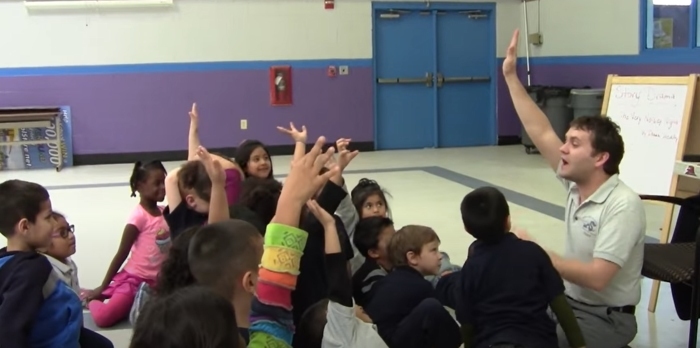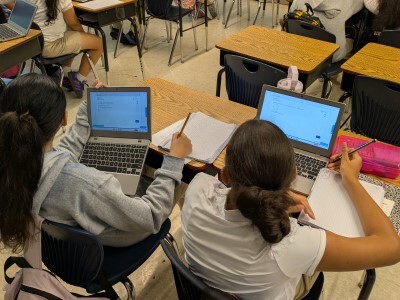Hold the Curtain! Unlocking Student Potential through Expressive Arts: A Pathway for Student Development
Topics
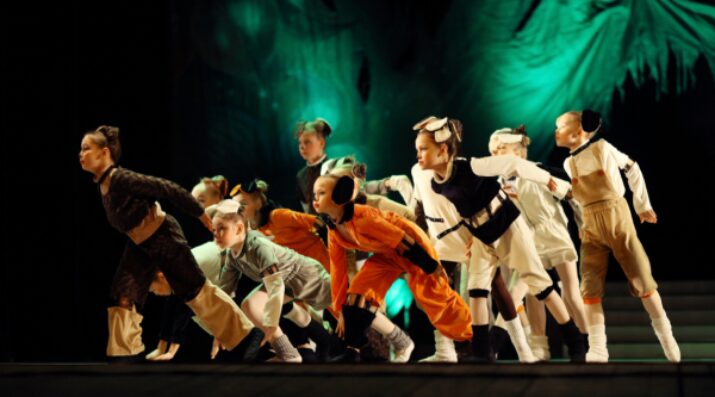
We’ve all had the experience of truly purposeful, authentic learning and know how valuable it is. Educators are taking the best of what we know about learning, student support, effective instruction, and interpersonal skill-building to completely reimagine schools so that students experience that kind of purposeful learning all day, every day.
The expressive arts catalyze student empowerment and discovery in education. These examples of expressive arts within a well-rounded education can transform learning.
When I reflect on my education, I recall consistently struggling up until my middle school and high school years. I was the type of student who was consistently struggling academically—math was impossible, spelling and grammar were atrocious (and still are!), and peer-to-peer connections were strained. However, I excelled if the assignment allowed for creativity, student choice, and leadership opportunities! While secondary education allowed me more opportunities to express myself through electives and other outlets, the basics of what defined me as a “successful student,” the “core academic subjects,” as they were called, remained elusive to me.
As I began to explore the intersections of education, learning, and the arts seriously, I became committed to understanding why it took me nearly 18 years of schooling to realize that I was both a capable student and an intelligent one. I wanted to help ensure other learners did not go through their formative years feeling incapable of success or that their ways of “knowing” were somehow lacking. This journey led me to seek solutions beyond what might be considered a “traditional” arts education or even an “integrative arts education.” I discovered the expressive arts, and suddenly, my understanding grew.
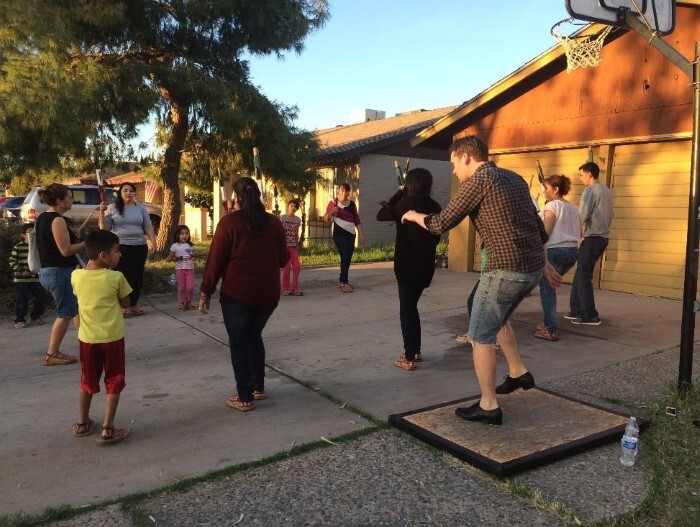
The author and Danza CAAS rehearsing for “It’s Something About the Shoes” performance, 2015.
What Are the Expressive Arts?
To understand how the methodology of the expressive arts differs from arts-based learning, let’s start with definitions.
Definitions
Arts Education: The U.S. Department of Education defines arts education as “…basic to the acquisition of a well-rounded education. The arts provide meaning to learning. They serve as a vehicle for acquiring the skills to which educational reformers have said students should aspire: problem-solving, higher-order thinking, flexibility, persistence, and cooperation.” Recognized arts education disciplines include music, dance, theatre, media arts, visual arts, including folk arts.
Arts Integration: The National Center for Education Statistics defines arts integration as including “…not only teaching students about the tools and processes used to produce works of art but also educating them about how the arts relate to history and cultures, and connections among arts subjects and other academic disciplines.”
Expressive Arts: The International Expressive Arts Therapy Association (IEATA) defines expressive arts as “…the use of multiple art forms, such as visual arts, music, movement, writing, and drama, to foster emotional healing, self-expression, and personal growth. This intermodal approach allows for creative exploration across different mediums, offering a powerful way to communicate and facilitate transformation through artistic expression.”
When exploring these definitions, key themes begin to emerge. When considering arts education, arts integration, and the expressive arts together, we can start to see the formation of a scaffolded instructional approach centered on holistic, whole-child development:
Holistic Development and Well-Rounded Education
- Arts Education emphasizes its role in achieving a well-rounded education, linking it to essential skills like problem-solving, higher-order thinking, and cooperation.
- Expressive Arts promotes personal growth and emotional healing, aligning with a holistic approach to development through multiple artistic forms.
Connection to Broader Learning
- Arts Education serves as a "vehicle" for learning critical life skills by providing students with a foundation of artistic literacy.
- Arts Integration focuses on how the arts connect to history, culture, and other academic disciplines, emphasizing interdisciplinary learning.
- Expressive Arts encourage creative exploration that fosters transformation, suggesting broader emotional and communicative impacts beyond traditionally siloed subjects.
Expressive Arts in Education Context
Imagine concentric circles where each circle is part of the whole, no more and no less than another part of the formation.
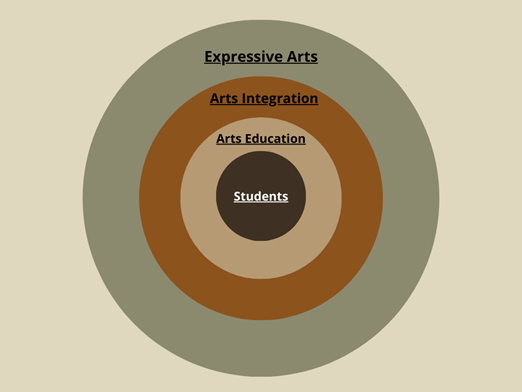
Circle of Creative Learning.
Central to this design are our students who, through a baseline development of artistic literacy made possible through an arts education, can build upon their broader understanding through an arts integration approach that encourages creative connections between content areas. Framing this experience within the ideals of the expressive arts allows the students to transform into active seekers of knowledge rather than passive learners.
arts education + arts integration + expressive arts = well-rounded education
When used in this context, we must establish that the expressive arts are not considered a therapeutic approach; instead, the emphasis is on utilizing multiple art forms as a transformative catalyst for student empowerment and discovery within educational settings. The core of this approach is the increased importance of process over product. Too often, our young people are measured on their output (this is true for many traditional arts education settings). At the same time, the bulk of the learning and development occurs throughout the “making” or the “doing.” By acknowledging the growth through the struggle of creating, the final artistic product is that much richer!
Instead of pushing toward the final bow, allow students to appreciate the applause and what it took to get there.
The final curtain is just another opportunity to create and explore something new!
What Does Expressive Arts in Education Look Like?
Consider this fictionalized example:
Loehr Elementary School is a K-8 arts-based charter school with a population of 225 students. Every week, each student receives a standards-based arts education in music, visual arts, dance, theatre, and media arts. Loehr Elementary is a low-income, Title I elementary school that experienced high teacher and school leadership turnover during the pandemic. Student attendance is also a critical issue. The students are underperforming academically, and the school is using arts integration interventions to improve academic performance in ELA and Math.
While successes are beginning to materialize, the school struggles with low student engagement and participation and high behavior challenges. Additionally, parent and family engagement remains down from the pre-pandemic rates. School leadership decides to “re-frame” their implementation approach through the expressive arts. Student-voice and culturally responsive methods are adopted, active student reflection is practiced across all subjects, and a growth mindset is emphasized over mastery.
The foundation of an art-based connection organically extended to arts integration academic discoveries. The climate, culture, and educational milestones improved when framed within the expressive arts. Teacher retention increased, and family engagement became more meaningful and relevant to the community.
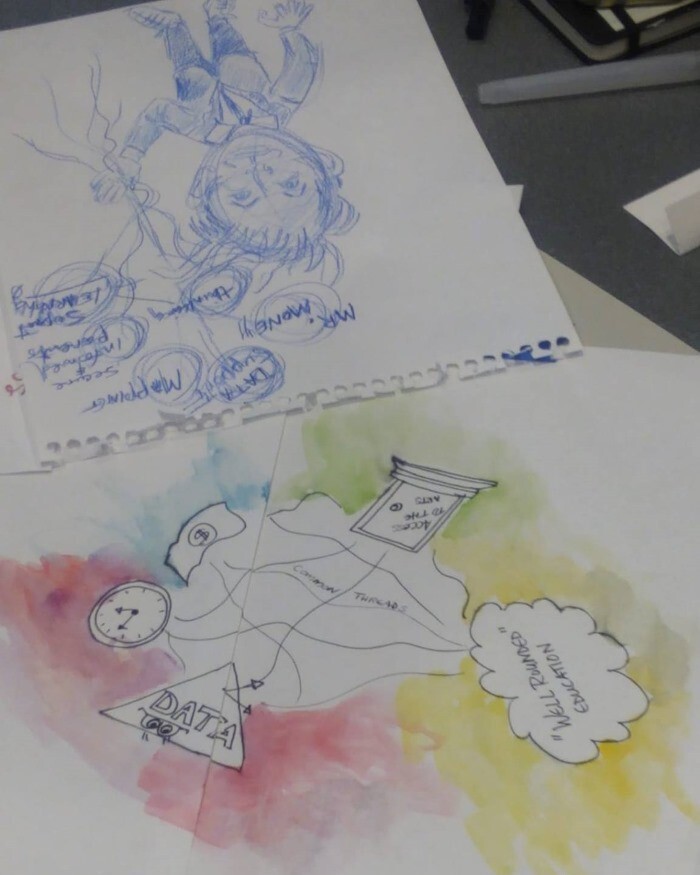
Practical Recommendations for Implementing Expressive Arts in K-12
Tapping into this structure does not have to be a heavy lift. The Circle of Creative Learning elements are often present in every classroom space. To maximize the benefits of a truly well-rounded education, teachers and leaders can re-prioritize intentions and investments (time, resources, funding) to generate a space where students feel empowered to engage in the learning process. Below are some strategies to get started:
Movement and Dance in the Classroom
- Introduce dance and body movement as ways for students to express emotions and thoughts, even in non-arts-related subjects.
- Example: In an ELA lesson, have students physicalize higher-level vocabulary. How is “burrowing” different than “digging”? Can you show me?
Creative Writing and Storytelling Activities
- Implement creative writing exercises across the curriculum. Suggest storytelling and spoken word projects that encourage students to explore personal narratives or fictional characters as a mode of self-expression.
- Example: The visual arts teacher demonstrates the concept of “composition” by asking students to personify the various shapes and elements in the picture. What type of character is the circle? Why are they below the square? How do these “characters” relate to the triangle in the foreground?
Collaborative Art Projects
- Propose group art projects to foster teamwork and cooperation, such as creating class murals, multimedia projects, or community service art that connects classroom themes to broader societal concepts.
- Example: Each spring, the art department produces a school-wide showcase. Many of the students and families struggle with food security and nutrition. The art department decided to produce a community event that brings together all the art forms and community partners to help families learn how to prepare healthier meals while providing access to food-based support programs.
Similar ideas can be applied to theatre, music, and media arts.
Embracing the Power of Expressive Arts in Education
Blending traditional arts education, arts integration, and expressive arts methodologies can lead to a truly well-rounded education. Incorporating expressive arts into K-12 education holds significant potential to unlock student growth, both academically and personally. By embracing multiple art forms—such as music, movement, visual arts, and drama—educators can create dynamic learning environments that foster self-expression, emotional healing, and intellectual development. This holistic approach empowers students to explore their identities and emotions and helps them develop critical thinking, problem-solving, and collaborative skills.
Key Benefits of Implementing Expressive Arts in Education
- Holistic Student Development: Expressive arts support students' emotional, intellectual, and creative growth, fostering personal exploration and emotional healing through various artistic mediums.
- Enhanced Problem-Solving and Critical Thinking: By engaging in creative practices, students develop critical thinking, flexibility, and problem-solving skills that transfer to other academic areas and real-life situations.
- Increased Engagement and Motivation: Integrating expressive arts into the curriculum provides students with meaningful, hands-on learning opportunities, improving motivation, focus, and classroom participation.
- Collaborative Learning and Social Skills: Expressive arts encourage teamwork, communication, and social interaction through group projects and performances, building students’ ability to work with others in diverse settings.
- Cultural and Emotional Awareness: Through artistic expression, students gain a deeper understanding of different cultures, histories, and emotions, fostering empathy and cultural sensitivity.
- Process Over Product: Expressive arts place value on the creative process, allowing students to explore and grow without the pressure of producing a “perfect” final product. This approach nurtures resilience and a growth mindset.
Call to Action for Educators
I’d like to encourage educators in every school to rethink the role of the arts in their classrooms. By activating expressive arts practices, you can provide students with meaningful self-expression, critical thinking, and collaboration opportunities. Start small by introducing creative movement, storytelling, or collaborative art projects into your lessons. Prioritize student reflection and growth over perfection and cultivate an environment where creativity is embraced in all subjects. Moreover, you do not need to be an “artist” to utilize this approach! Emphasize your own growth and development through whole group reflections and allow more artistically literate students to assume leadership roles.
By weaving arts education, arts integration, and expressive arts into your teaching, you help develop well-rounded students who are not only academically successful but also emotionally and socially empowered. Let’s harness the transformative power of expressive arts to cultivate more empowered, engaged, and successful students. Create opportunities for students not only to succeed but to thrive. In doing so, we can help build a future where students are better prepared to face challenges with creativity, empathy, and confidence.
All images, except where noted, courtesy of the author.


